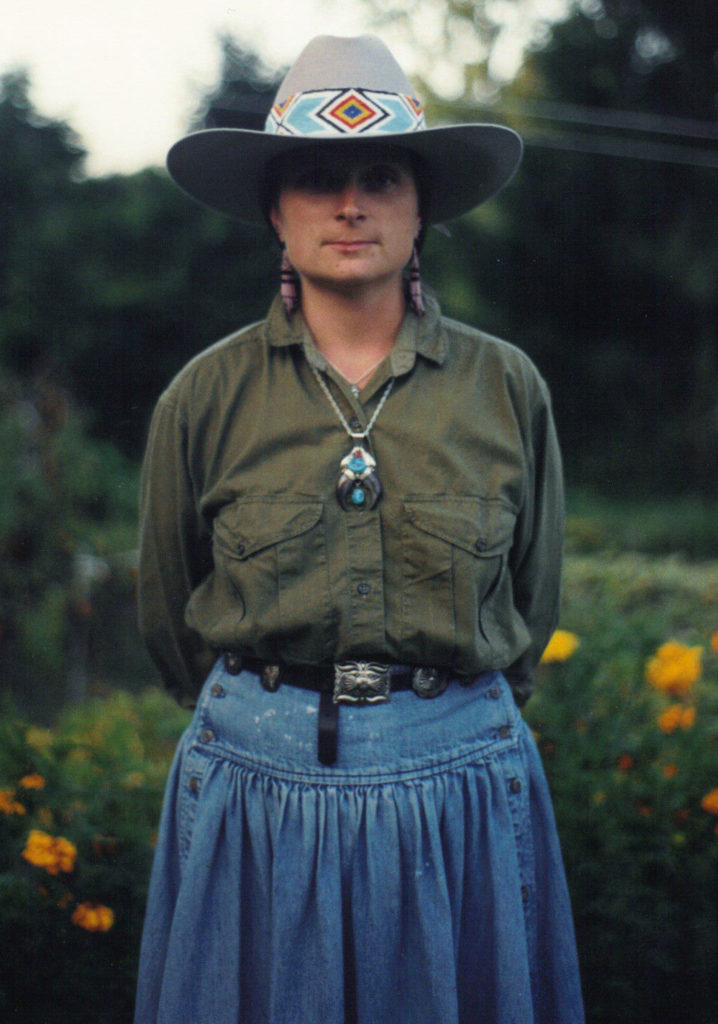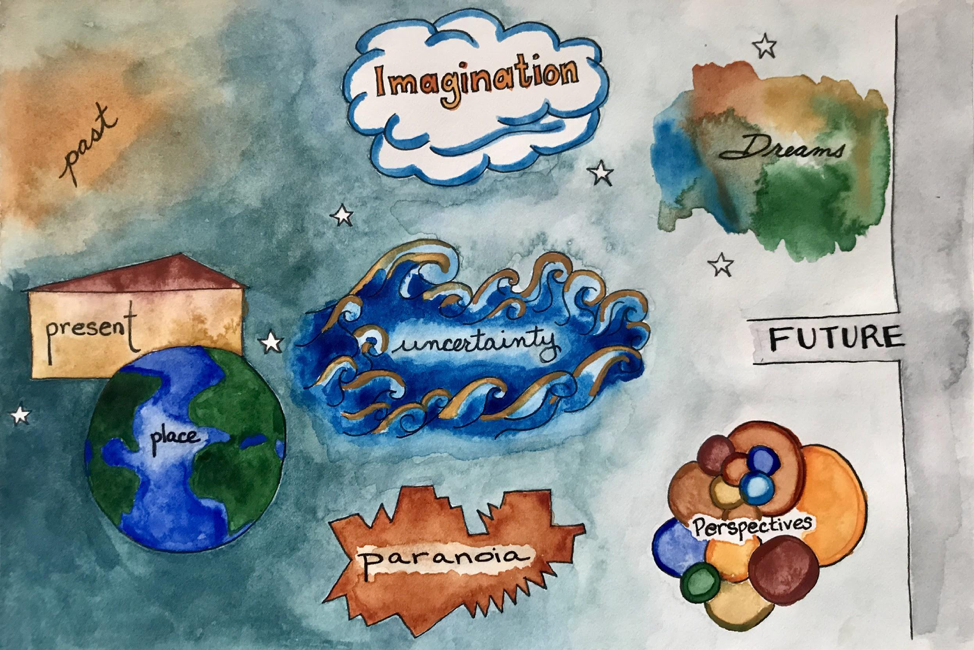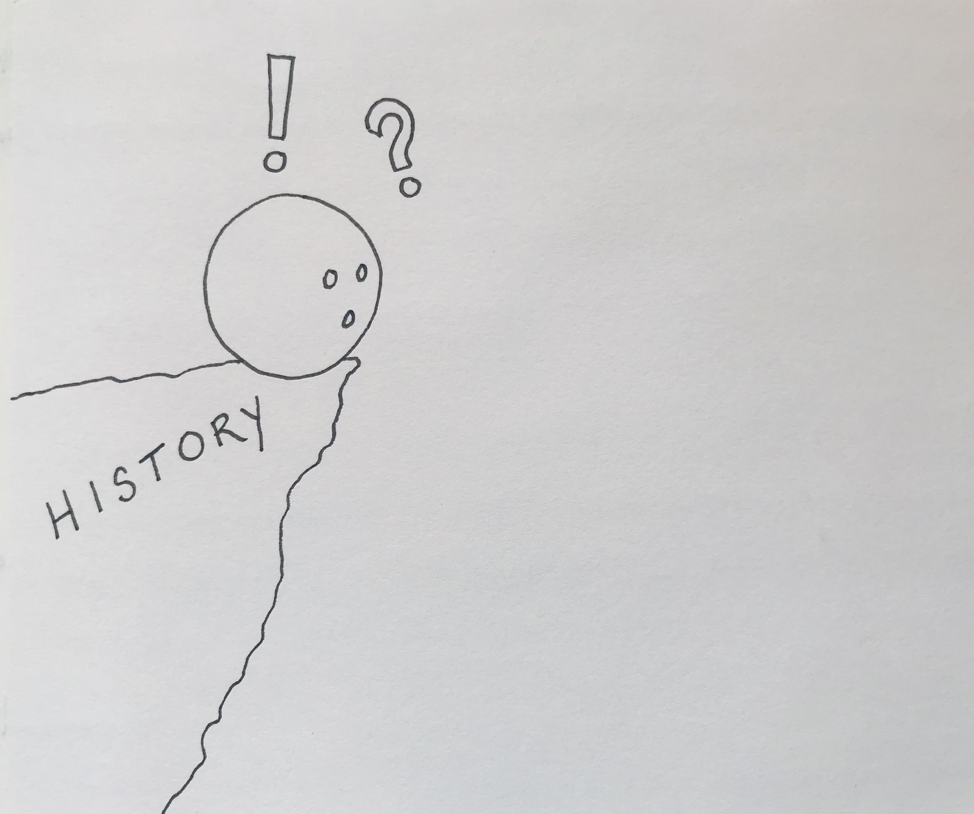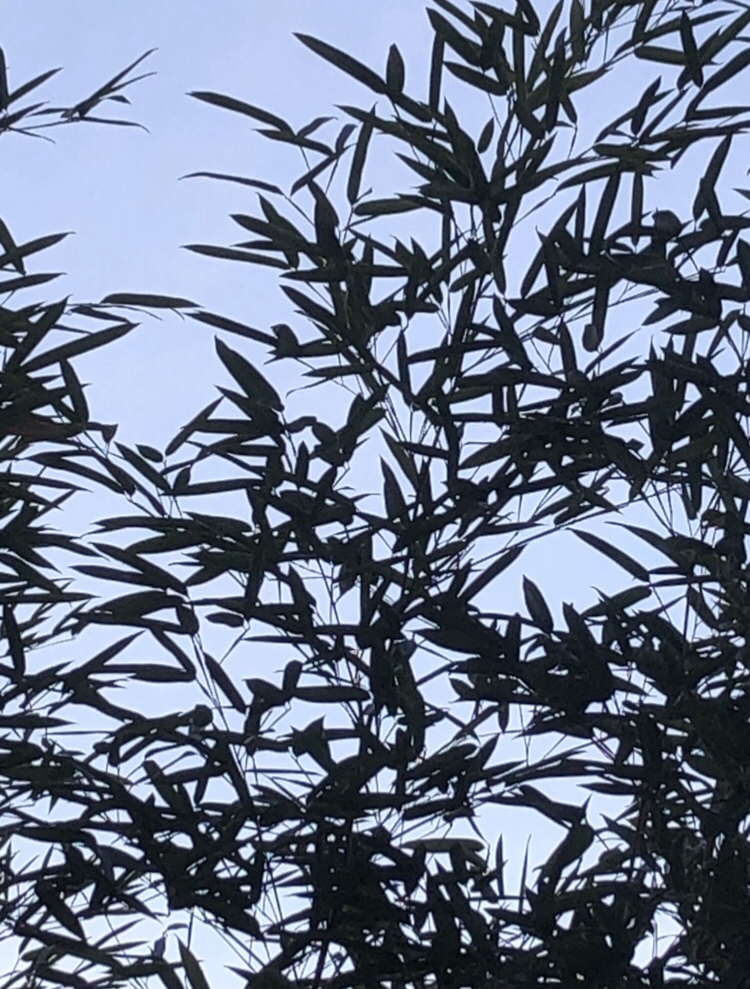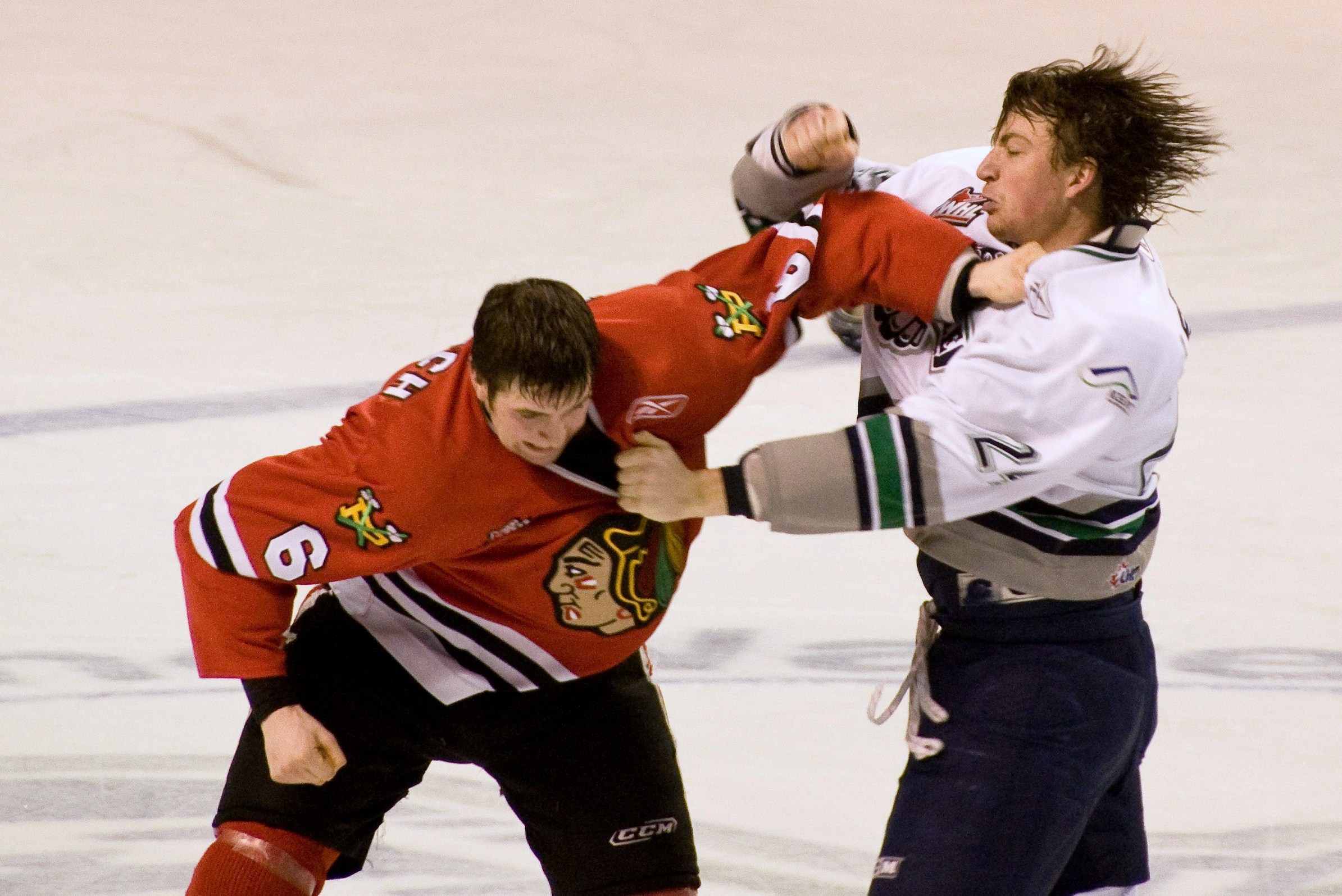
John Gurdenson’s legs weren’t what they used to be, and though the veteran charged hard on the forecheck, he was slow, too heavy and slow, and all of us in the arena groaned as the puck slipped down the ice away from him again.
The opposing defenseman took control, easily stepped away, beat Gurdenson along the wall, and made a crisp first pass. The rush headed back the other way. Gurdenson swung his stick at the legs of the Pittsburgh defenseman, gave him the look and the head nod—we knew the signal and a few of us started to clap in anticipation—but the other player ignored him and skated away. Gurdenson drifted back to the bench for a change.
First line out. Tailor hopped over the boards and sprinted into the offensive zone. We all stood, every time Tailor hit the ice. His skates churned the surface with each step, as if he was grabbing great fistfuls of ice and pulling himself along, climbing a rope with his strength alone. It was beautiful to watch. Tailor was just a rookie who had found his spot in the lineup halfway through the season, after Gurdenson broke his ribs. . We loved to watch him fly, plus he had a nose for the net, and was tough and squirrelly and just a bit of a pest, the kind of guy you definitely want on your team and not theirs, which made us cheer all the more.
Gurdenson waited on the bench. Another change, and another. Third line, second line, first line, goal. Amirov, from Tailor, off a cagey steal in the offensive zone. A pretty play, the announcer said, muscle to finesse and a big finish.
We threw our hats on the ice in a shower of New Year’s confetti. The home crowd, the sound we made, it was the din of starving men gorging at the master’s table. We were up 4-1. We wanted five. We wanted ten. We wanted to feast until we puked. After years of losing, we couldn’t get enough.
“Gurdsy, Renault, Scotty, you’re up,” the assistant coach yelled, calling the line.
Off the faceoff, the puck skipped past Gurdenson, his feet always stuck in cold oatmeal, but then, behind the action, an opportunity. The young defenseman never saw the thick tree trunk fall. Gurdenson’s check caught him on the hip and shoulder, flipped him sideways, all legs and outstretched arms so he spun to the ice like an unbuckled passenger tossed from a moving car. The noise in the arena hadn’t dimmed since the goal, but now we found a new octave. We stood up as one, pounded our seats and our fellow fans because we knew what was coming. The Troll had been our champion for a decade.
Gurdenson skated backwards away from the fallen man. A dancing partner from the other corner approached. They shook off their gloves and each grabbed a hunk of sweater and turned on the two piston engine. We were incensed. The fighters traded right hands.
A spectacle at center ice, and all eyes on Gurdenson.
Our man absorbed three fists to the side of the head before his helmet went flying. His challenger’s helmet stayed on though, and good thing too, the announcer would say. Gurdenson bloodied the lip of his younger opponent with a right and the kid went woozy and his knees buckled. Gurdenson shifted his weight, leaned back, kept the boy upright with the left hand, didn’t let him fall, and then delivered another right to the mouth. Teeth flew. Gurdenson’s hand split between the knuckles and his grip with his left started to falter. The kid was all limp dead weight, lights out, but Gurdenson didn’t hesitate, swung and connected twice more before the unconscious boy finally slipped free, his helmeted head bouncing off the ice when he landed.
Gurdenson stood over him for a moment, and then skated away even before the referees approached.
Nineteen thousand of us chanted “Troll! Troll! Troll! Troll!” As many cell phone cameras flashed. Gurdenson pointed a finger at the Pittsburgh bench, picked his next victim, gave a “see-you-in-the-playoffs” nod, and we roared even louder. Two minutes for roughing, five for fighting, and a game misconduct. Gurdenson’s night was over. He skated to the door, shuffled back to the dressing room, and waited for the rest of the team. The third period would end soon.
Gurdenson sat in front of his stall. He was the only one in the room. He gingerly removed his jersey, stretched a shoulder, checked a bruise, shook out his right hand and stuffed it in a bag of ice that quickly turned pink.
He sat and waited for his team, and it was there, alone, helmet and shoulder pads off, towel over his neck, that it happened.
The general manager walked in from the side door that led to the executive offices. A tie and cologne and a red face and slicked back hair. It was just the two of them.
“You’ve been traded, Gurdsy.”
Gurdenson looked up at him, a moment, and then back down between his skates.
“You’re headed to the Island, effective immediately.”
Silence.
“You can get dressed.” Pause. “Thanks for everything you’ve meant to this organization.”
The general manager walked out. Gurdenson’s deliberate breath and the creak of his tightly laced skates and our dull rumble muffled all until the double-swinging locker room door burst open and crisp sticks and shouts and clatters from the team and the crowded arena behind.
The game was over. Gurdenson didn’t move. The coach gave a speech and the team congratulated young Amirov on his first hat trick and slapped Tailor’s back and Gurdenson sat and stared a hole in the plush carpet. Water bottles and the showers and sticks checked and re-taped. Then slowly, at a level below the operational clamor of full professional locker room, restrained voices passed the news from player to player. They glanced over. Gurdenson met no eyes.
The others gathered their gear and put on their suits and ties, but as they left the room, one-by-one each man walked up to Gurdenson where he still sat with his skates on, tapped him with the blade of their stick, under their breath:
“Tough one, Gurdsy.”
“Good luck, Gurdsy.”
“See you around, Gurdsy.”
The coach put a hand on his shoulder. Gurdenson couldn’t see him shake his head.
“It’s a tough deal, Gurdsy. It’s a business now, eh, but it’s a tough deal. You take care of yourself.”
The coach was the last to leave. Gurdenson again sat alone in the empty dressing room. He sat there for a long time. Then he got up, put on his suit without showering, and left out the back door of the arena where no one was waiting for him.
*****
OCTOBER 1996, SAULT STE MARIE, ONTARIO, SOO GREYHOUNDS RADIO BROADCAST:
Knights recover the puck, slip it along the halfwall, lose control, now they have it back, and dump it into the Soo zone.
Robert with the puck, finds his man, Soo coming away, long pass to Paquet and OH MY Ballard just stepped into Paquet at the Soo bench.
Paquet had his head down and Ballard just freight-trained him!
Paquet never saw it and he’s hurt. Paquet is down.
Play continues, puck slides into London’s end but now there’s some chirping going on and it looks like Gurdenson is challenging Ballard.
Gurdenson, in his first game here with the Soo, he isn’t wasting any time and they throw down the gloves and here they go!
Gurdenson and Ballard!
Gurdenson grabs on and starts throwing rights in there!
Ballard can’t get his head up, Gurdenson’s pummeling him with the right!
Ballard hasn’t even swung yet but now he does and both men are swinging away. Ballard and Gurdenson!
Ballard connects on a right and another one but WOW Gurdenson just caught him square on the nose. Gurdenson KO’d Ballard and he’s stunned. That nose has gotta be broken, Gurdenson dropped him like a sack of potatoes.
But now here comes McCarthy. You knew he was going to get involved.
And Gurdenson has got to be exhausted. He’s got to be just spent, after the tilt with Ballard and Ballard is one tough customer but he is still down on the ice and you can see the blood now pooling at his knees.
They need to get in there. The officials need to get in there and stop this. Gurdenson just fought and he’s got to be spent but the linesmen are distracted with Paquet and Ballard and the scrum in front of the Soo bench.
Well, McCarthy has taken exception and Gurdenson isn’t backing down and so here they go.
Gurdenson and McCarthy!
Gurdenson is giving up twenty pounds easy and McCarthy has his grip with the left and here he comes with the right, over the top.
And Gurdenson is still trying to get a hold and McCarthy comes in with another right and another.
He’s firing the right and Gurdenson can’t get his grip and he still hasn’t swung and OHHHHH McCarthy popped him right on the button! He caught him square with a right!
But Gurdenson is still on his feet somehow and now he comes back with a right. And another!
Both men just firing the punches in there and now Gurdenson frees his left hand and switches sides and starts going overtop with the left.
He surprised McCarthy and he caught him with a beauty and McCarthy looks dazed.
Gurdenson has McCarthy’s jersey up over his head and now the left and an uppercut and another, Gurdenson is working the side of the head and down to the ice they go!
WOW!
Gurdenson, the young kid from Detroit, a troll from below the Mackinac Bridge, makes his mark in the Soo!
He’s fighting like a troll out there.
Ballard still hasn’t gotten up yet and the trainer has come out and I can’t see his face but it has got to be a mess. McCarthy has gone straight to the dressing room with a huge cut over his eye and that’s gunna need stitches.
And this crowd is on their feet here in Sault Ste Marie as Gurdenson is still squawking at the Knights bench.
Welcome to the league, Troll!
*****
“You know, Bobby, I can’t even believe I need to make this phone call.”
“Oh lay off the bullshit, Tom. I’m not buying, you can stop selling. You and John both knew this was coming. Or you should have.”
“My client’s been with you twelve years. That should count for something.”
“It does. It means we’ve paid him a lot of money and he should be grateful for it.”
“He was with you in thick and thin, Bobby, and there was a lot of thin. And this is how you treat him?”
“For fuck’s sake, we’re making a run. You can see that. I have to do what’s best for the team.”
“John Gurdenson is best for your team. He’s given his body and soul to this team and this city and now, on your best shot at the cup in thirty years, this is when you move him?” Silence. “This game used to be about loyalty, Bobby. What happened to loyalty? What happened to veteran leadership?”
“It’s a different game, Tommy. I need goals.”
“You need leadership and toughness.”
“I need goals and toughness. You can’t have one or the other anymore. Did you see what Tailor did last night?”
“What’s that got to do with it?”
“He destroyed his check and then set up Amo. I never saw John make a play like that, never. That Tailor kid can fight but he can also hit and pass and …”
“And he’s only played what, fifteen games for you?”
“Yes, and so he makes fucking half what Gurdenson does! Fifteen games, four goals, five assists. For half! We needed the cap room. This is our year, Tommy, this is it.”
“The fans love him.”
“The fans love winning. The fans love the cup.”
“True, but not like John. He’s old time. He does things the old way. He’d do anything for the cup and you know it. You’ve seen it. The things he’s endured for this team. This is like, like….” He searched for the word. “… a banishment or something. You can’t do this to him.”
“Listen, Tommy, I like you. I like John. It would have been nice to keep him. If it was like a couple years ago, you know, he used to be able to chip in a couple goals a year. He had what, ten, in ‘08? Those days are long gone, Tommy, you know it. Tailor has nine points in fifteen games. John hasn’t had a point in the last twenty, at least. And he’s not nearly as tough or durable as he thinks he is. With the injury troubles too, John should consider this a hint.”
“A hint for what?”
“I wish him all the best. Tailor is our man now. Tell Gurdsy good luck.”
*****
Gurdenson read the rule book six times, but there was no loophole or caveat or mercy clause to find. The league was explicit and direct. To get your name on the cup, you had to be in the series final or play forty one games that season.
Gurdenson looked at the schedule. Sixty two games so far, but he missed two with a hip strain, seven with a busted hand that was still broken when he came back. And then the ribs, cracked in practice when Tailor hit him on a non-contact drill. Over-excited or deliberate or what, didn’t matter, Gurdenson went out five games, Tailor went in, earned a spot in the lineup. After that, the worst, the coup de grace, ten games as a healthy scratch. Ten games gone so Tailor could play.
Gurdenson did the math. Sixty two minus twenty four was thirty eight. Thirty eight games. Three short.
Three short, no cup.
They’d win it this year, everyone knew it. Three short. No cup.
Tailor would only have thirty six, but he’d be in the cup final for sure.
Gurdenson took another drink.
The ribs. Tailor. Three short, no cup.
He checked the schedule again, noted every game left for his old team, saw that the Island wasn’t on it, and then he picked up the phone and called his agent.
*****
The closest we came to the Stanley Cup was the year before. We made it to the conference finals, the last step before playing for it all. We hadn’t made the playoffs in five years, hadn’t won a series in twice that. But now we had a young and up-and-coming team, a bench full of draft picks still in their diapers; only Gurdenson had endured the previous long years of toiling in fallow fields.
The first two rounds were a breeze, but in the third round the team encountered an older and tougher squad. We were hesitant and unsure, exposed as pretenders merely playing dress-up in our father’s clothes. We lost that series in only five games, but no true fan among us would forget that our team’s tender spines only bent and did not break, that our will was not permanently dashed, because of the actions of John Gurdenson in game three.
Our boys had been out-muscled in the corners, out-bruised in the paint, stripped and pushed off the puck, knocked about and we boo’d them hard until, as a final humiliation, our goaltender was sent sprawling, a blind hit from behind. Somehow his mask hit the pipe on the way down. He didn’t move for several minutes. The shame was not that he went to the hospital for a brain scan, but rather that every man on ice watched it happen and did nothing.
The coach was planted behind the bench as an unvented furnace. He grew red and silent. No more shouts and mocks and cajoles of the line of smooth faces before him. He put out Gurdenson. We all knew the reason why, for the Troll but to do and…well, you know the rest.
When the puck was dropped Gurdenson ignored it. He skated directly to the opposing bench, discarding his gloves as he went. We knew what was coming, we started our chant for the Troll. His target knew as well, and was half out of his seat when Gurdenson arrived and grabbed his sweater by the outside of the shoulders and pulled him over the boards and onto the ice. The man hit awkwardly but was up quickly. He had bent over goaltenders before, and knew how to stand tall to answer for the taking of liberties.
We always loved Gurdenson because he fought like he had nothing to lose, like he wouldn’t earn his supper if he didn’t take his licks. The newspaper said he fought like a bareknuckle boxer in the hidden back room of a speakeasy, betting the rent money on himself. That he fought to win, not to prolong a show until a referee might step in. Fans knew that a Gurdenson fight meant blood and broken orbitals.
That night, when Gurdenson got to that bench, eleven years of losing poured on the head of his opponent. He pummeled the man and discarded him, but then a second contender approached, and a third. More hands reached out from the bench, grabbed Gurdenson’s elbows and collar. His left arm was pinned. He lost his grasp on the other man’s jersey. A fist swung.
There was a time, not that many years before perhaps, when John Gurdenson would have ducked his head, broken free, twisted away at the last second. But no more. The years hung from him as invisible weights on his ankles and wrists. The right hand hit him in the temple, providence fled, and then surely nothing but a few dim stars amidst the void.
Gurdenson staggered. The rest of his team watched as he was pulled into the opposing bench and gang tackled. Two men pinned his lower half, many more on top. Gurdenson never said what happened to him at the bottom of the pile; it was hidden behind the boards, away from the cameras, never appeared on a highlight reel or replay. It took several minutes for the referees to pull everyone off, and all anyone ever saw was the result.
When Gurdenson emerged he was unrecognizable. He head and face were lumpy, like a thawed Thanksgiving turkey just taken out of the packaging. Blood pooled in unnatural places behind tight skin. His eyes were swollen to blindness. His left arm hung. We were quiet. No Troll calls in the arena. He was guided to the locker room to be treated by the doctors, and would spend two days in the hospital.
The coach stalked behind the bench, slammed a heavy palm against the glass behind him, and finally opened the coke oven door:
“Now you sons of bitches will believe we’re in a war!” he roared.
*****
“You know Tommy, we could have talked on the phone,” said Tampa’s general manager, a round balding man with a stubbly goatee. “Why not that? Why fly down?”
The waitress came over and filled the two water glasses. She spilled a few drops perilously close to the big man’s lap and he looked up and gave her a face but she didn’t notice.
“And they don’t even offer sparkling instead,” he mumbled to himself. And then, louder, “Tommy, why are we here?”
“Maybe I just missed seeing your face?” Tom said, and took a sip.
“The trade deadline is tomorrow and I have work to do. Why did you come down here?” he asked again.
Tom closed the menu.
“We’re here because you record your calls. I’d rather not have a transcript of this business when we’re done,” Tom said.
“Well, spit it out then. You have my attention,” the other man said, and closed his menu as well and placed it on the stained linen.
“I need you to trade for John Gurdenson,” Tom said.
“He just went to the Island.”
“The Island isn’t going to work for us.”
“Why would they trade him to me?”
“We’ve already worked that out.”
“Well, what if I don’t want him? He’s a has-been.”
“We’ll make it worth your while.”
“We? Who’s we? The Island is trying to put fans in the seats, they need a small time showman. I, on the other hand, am trying to win hockey games here. Your man’s got nothing left in the tank. My team’s trying to make the playoffs. You can’t make it worth our while.”
“I said we would make it worth your while.”
Everything went quiet.
“Tommy, what are you doing?”
Tom looked down and smoothed the table cloth with his large hands. His wrinkled fingers looked like overboiled sausages left out too long on the plate.
“I’d rather not say,” Tom said finally.
“How many other GMs have you approached?”
“Three.”
“Did they all tell you to piss off?”
“Basically.”
“And you haven’t given up yet?”
“I read in the paper about Melissa’s latest court filing, and I thought I’d give it one more shot.”
Silence again. Tom took a drink of water.
“It’s a shame about Melissa and the kids,” Tom said. “I’m sorry. I never thought it would get so ugly with you two. I can only imagine the legal fees.”
The man sat and stared at his empty plate a long time before answering.
“Will the Island play ball?”
“Sixth round pick. You won’t even miss it next year. And my client is in the line-up the rest of the season.”
*****
CHICAGO SPORTSRADIO 720 POST-GAME SHOW:
PARKER: I think he planned it.
WHITE: Oh, you can’t be serious.
PARKER: He went into tonight with the idea. Two games left in the season. We’re the top seed. They’re going nowhere. He’s going nowhere. This didn’t just randomly happen in the heat of the moment.
WHITE: You don’t think the booing got to him.
PARKER: Everyone gets booed when they come back to play a game in their old building against their old team. Even after twelve years, it happens. No, that can’t be it.
WHITE: Well, this is a big charge, planning to do it. What’s your proof?
PARKER: Go back and look at the replays of his shifts. He’s completely distracted, oblivious. He’s not involved in the play, he’s not chasing down pucks…
WHITE: He hasn’t been a scoring threat in years. How can you tell the difference?
PARKER: …he’s not doing anything except waiting for that Tailor line to get on the ice. In the first period he stretched his shifts, and when that didn’t work, I think he iced it on purpose. To lure them out.
WHITE: Well, I’ll say this, and they showed it on the broadcast, he had no one around him when he finally recovered the puck at the end of that long stretch in their own zone. He could have skated it out, to get his line off, but he didn’t, he iced it instead. And the announcers questioned that decision at the time.
PARKER: Of course they did. It was a bad play. But it meant he was stuck out there, and that we were going to put out the top line in the offensive zone, which is exactly what he wanted. That was the first time all game that he and Tailor were on the ice at the same time.
WHITE: Is that right? Can we check that?
PARKER: This is what I’m saying: John Gurdenson meant to do it. These guys, and especially him, we saw this last year, they will do anything for the cup. But now he’s gone, traded. What does the code say?
WHITE: The code says you handle it on the ice, but this went way beyond the hockey code.
PARKER: Well, code or not, he handled it on the ice alright. And someone, the league, the police, someone, is going to ask him. Did you plan to do this? Was this the plan all along? And I’m telling you, the answer is going to be yes.
*****
And then there stood Tailor, on the side of the scrum, against the boards, back turned.
Gurdenson skated alone from center ice, eyes on his target only, skating more quickly now, silently gathering momentum as a pendulum released. At the last moment he pushed off, left his feet, and raised his elbow. Tailor’s back was still turned. Gurdenson caught him at full speed, full body, along his left shoulder and hip, Gurdenson’s elbow on the young man’s left temple. Tailor’s face hit the glass, he momentarily went unconscious, and in that second, fell to the ice like a butchered cattle carcass let off the hook.
In the arena, we shouted and jeered. Tailor was our man now, and we pointed at the officials to intervene and yelled for our boys to step in. Gurdenson shook off the hit. Hands clutched at him but he jerked loosean elbow and swung at his restrainer behind him and dropped the shocked and unprepared referee. Every other player was paired off with an opponent, locked in entanglements of gear and jerseys and arms and legs, wrestling or recovering.
Gurdenson was alone, free. He loomed over Tailor, who was still face down, groaning and only slowly moving to his hands and knees.
Gurdenson raised his stick and then swung it like an axe down on the back of Tailor’s head. The stick shattered and Tailor’s helmet flew and he dropped to the ice again. Gurdenson carefully took off his gloves and picked the kid up by the sweater and spun him so they were face to face. Tailor was in and out. He tried to get his hands up but he was too limp to fight back and he fell at Gurdenson’s first blow. So the big man rolled the kid over and sat on Tailor’s chest and began to beat the boy’s unconscious face with his bare scarred hands. Tailor came to and started to twitch but he was pinned. Sweat and spit and snot and then nothing but blood, a wet slap with every impact. Gurdenson threw rights until he felt the bones in Tailor’s face yield to gritty mush. He didn’t stop, not even when the nose tore, revealing a cavern, and boiling blood erupted everywhere.
Tailor screamed.
Gurdenson never slowed. He swung again and again and again and his jersey dripped gore. We stared in silence. Tailor’s cries rang in the rafters and then faded to a gurgle, and his red hot blood melted the ice beneath his sprawled body. The benches emptied, and security ran on the ice, but not in time. The Troll leaned over and whispered into what was left of Tailor’s ear.
“No cups for us.”

